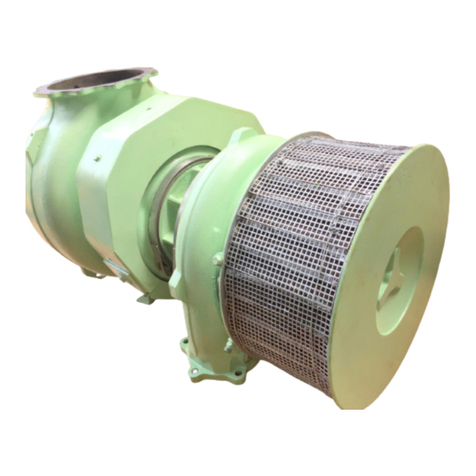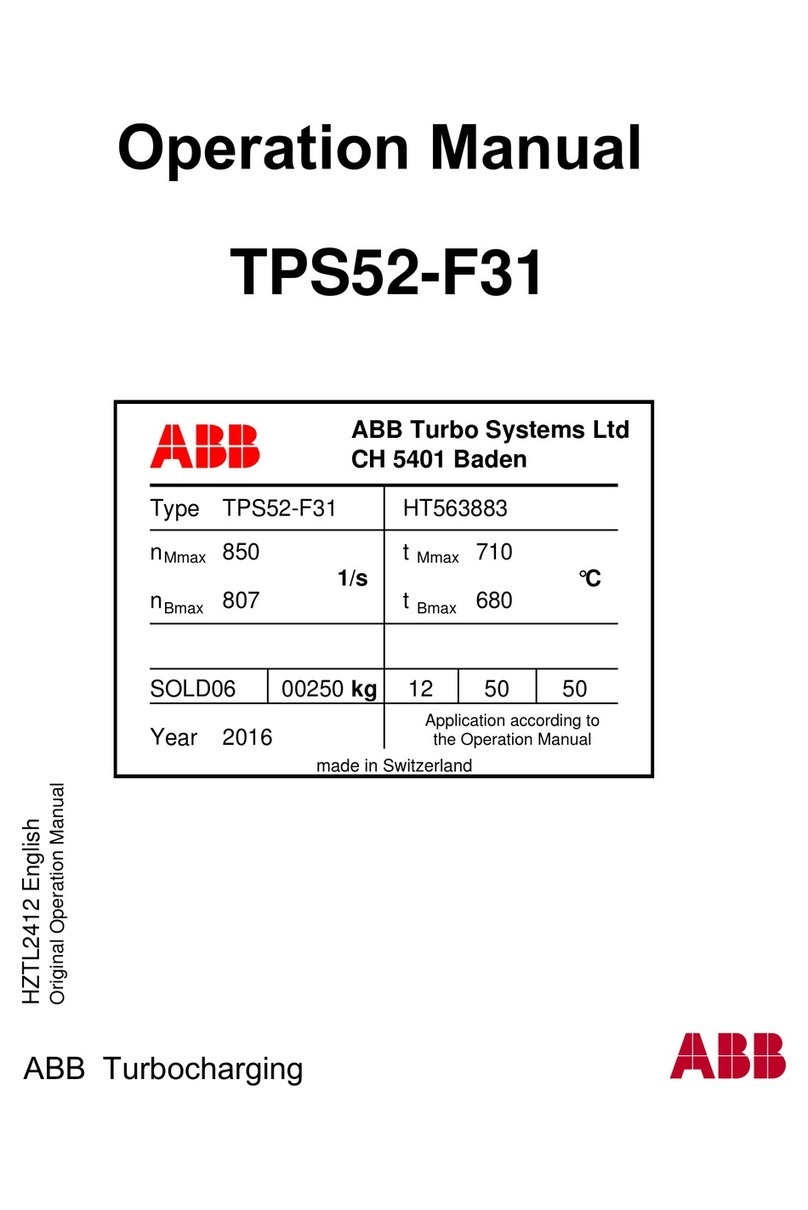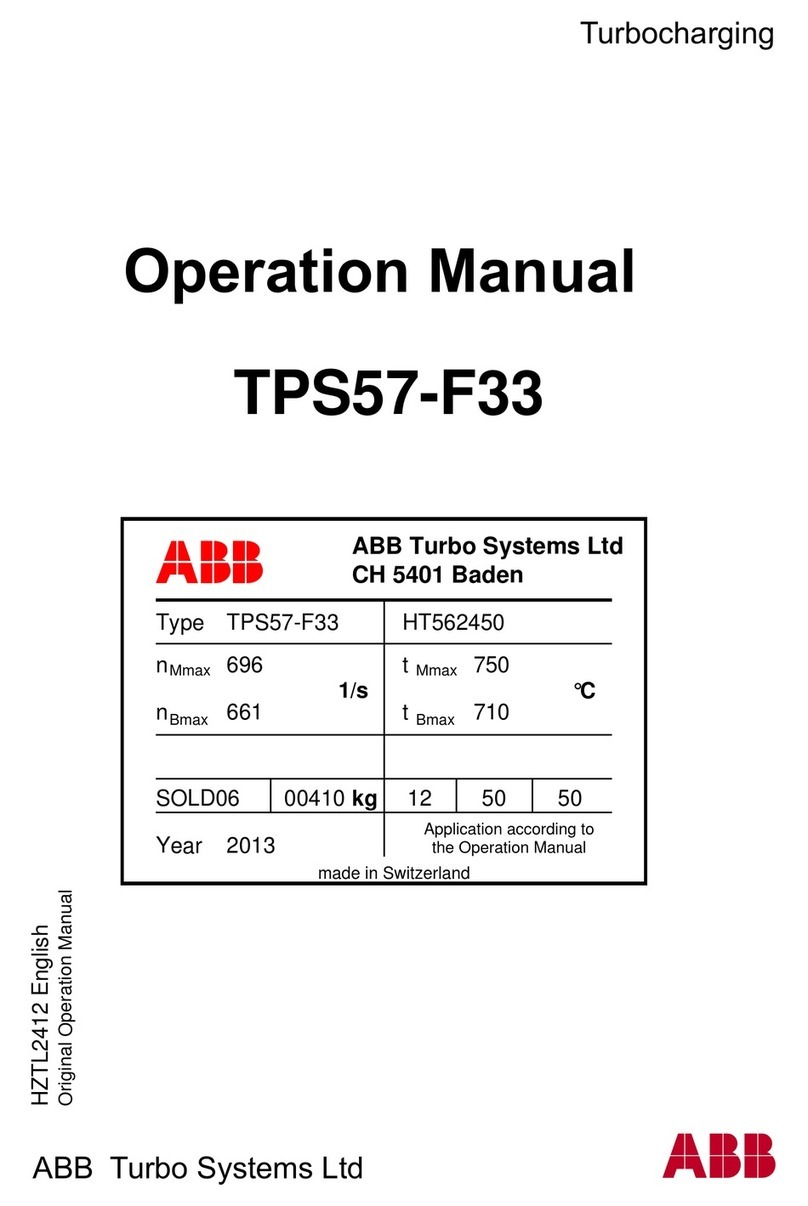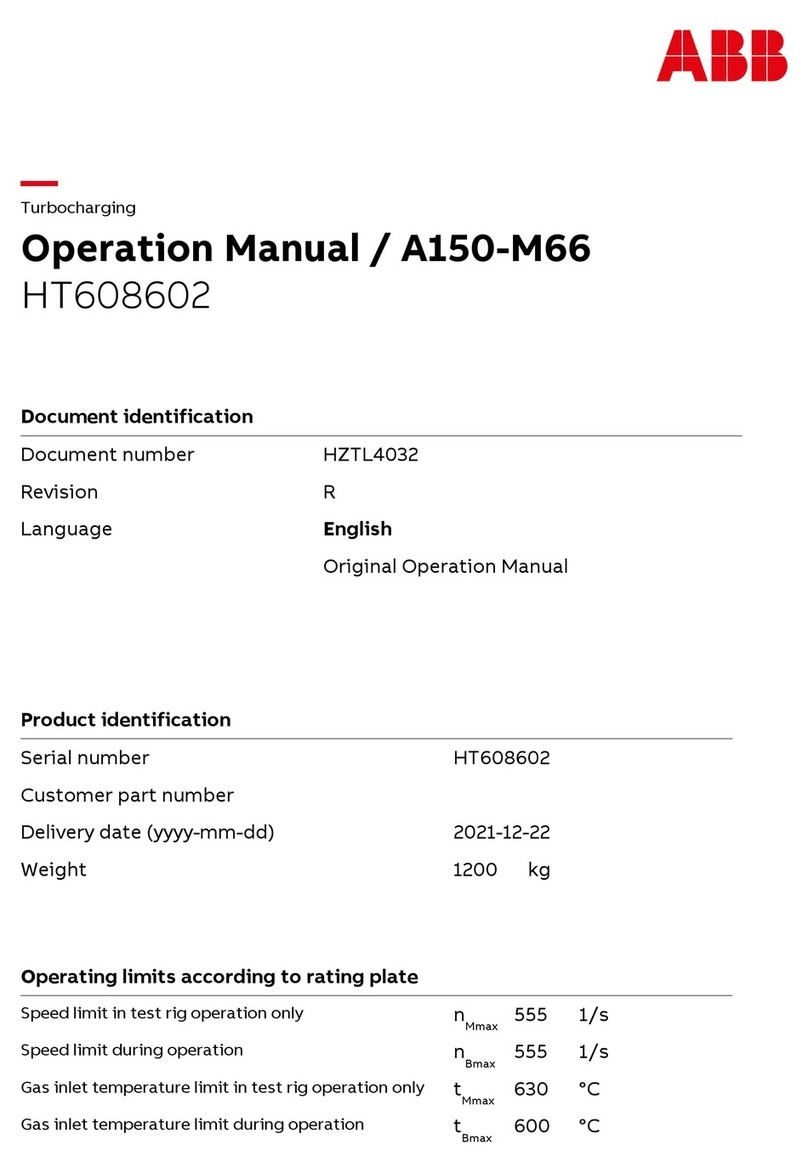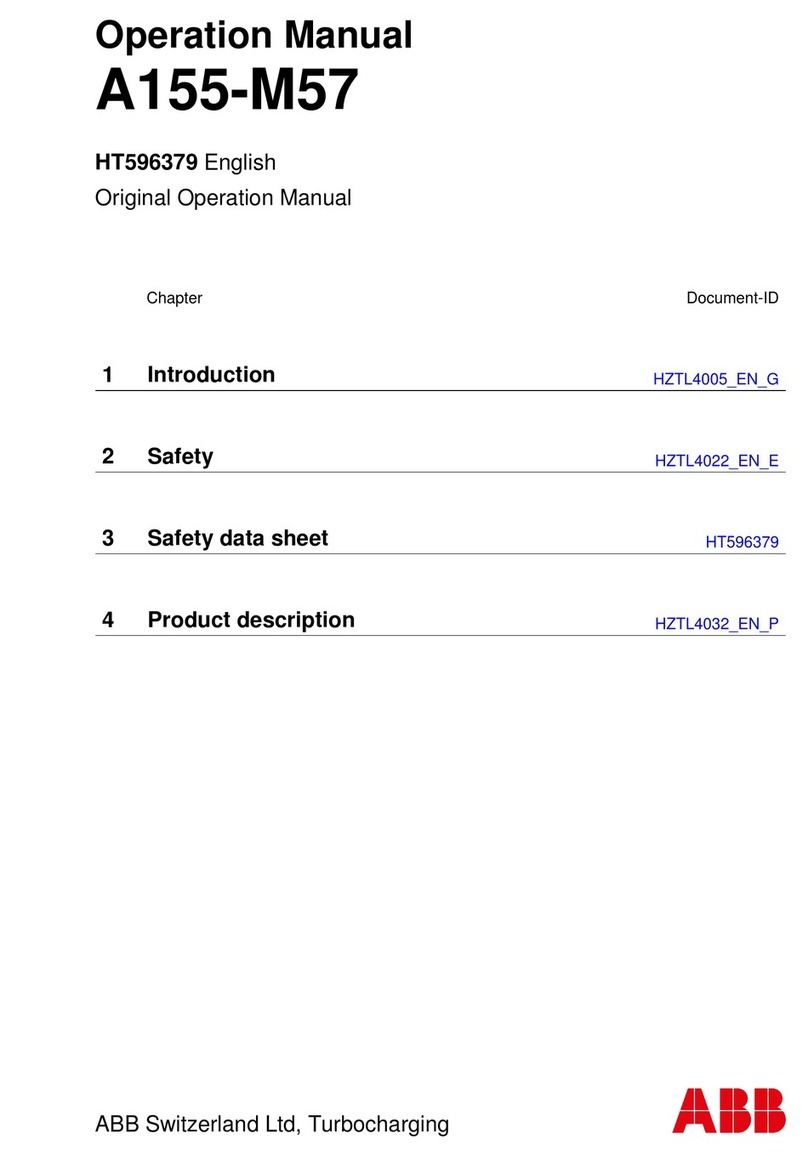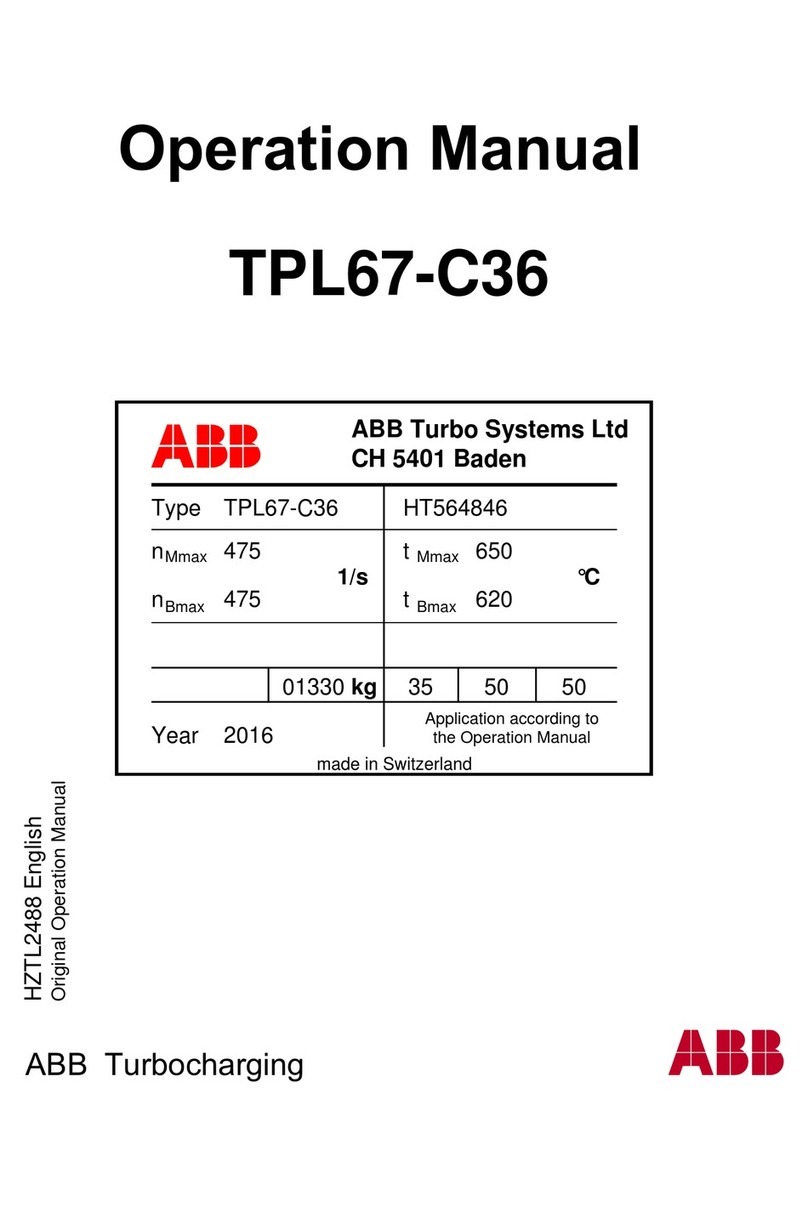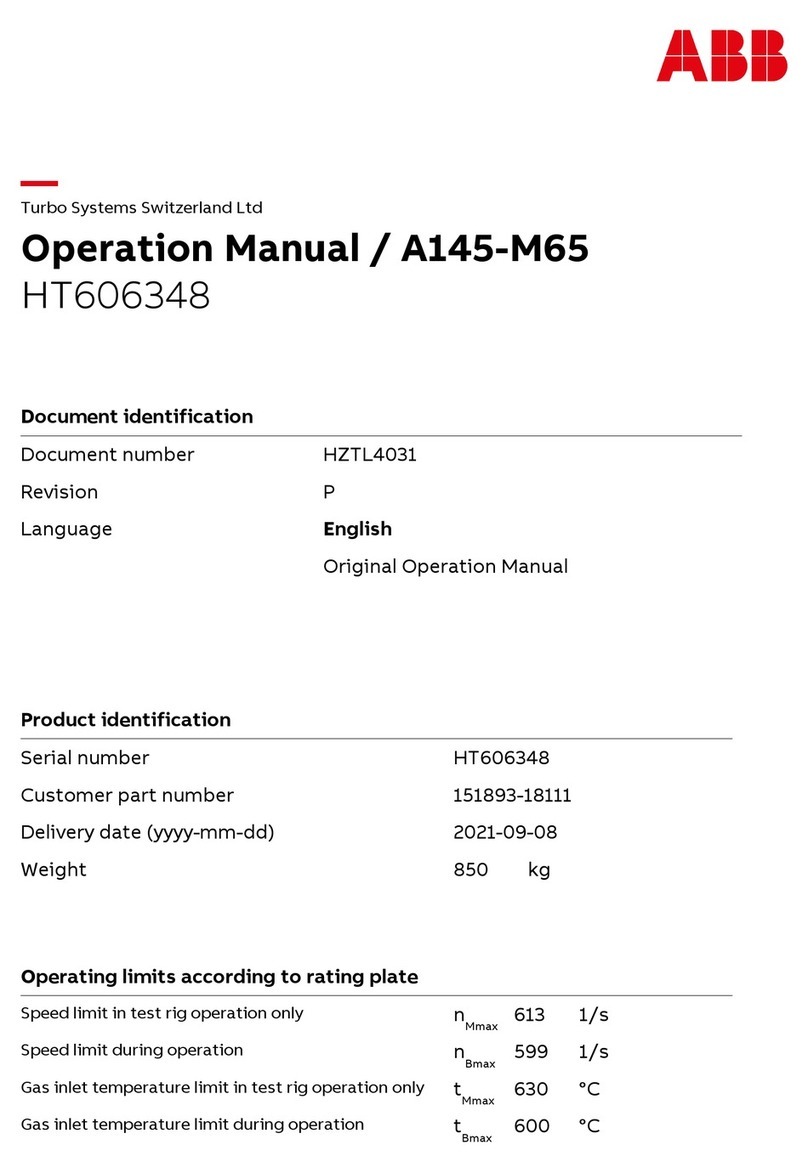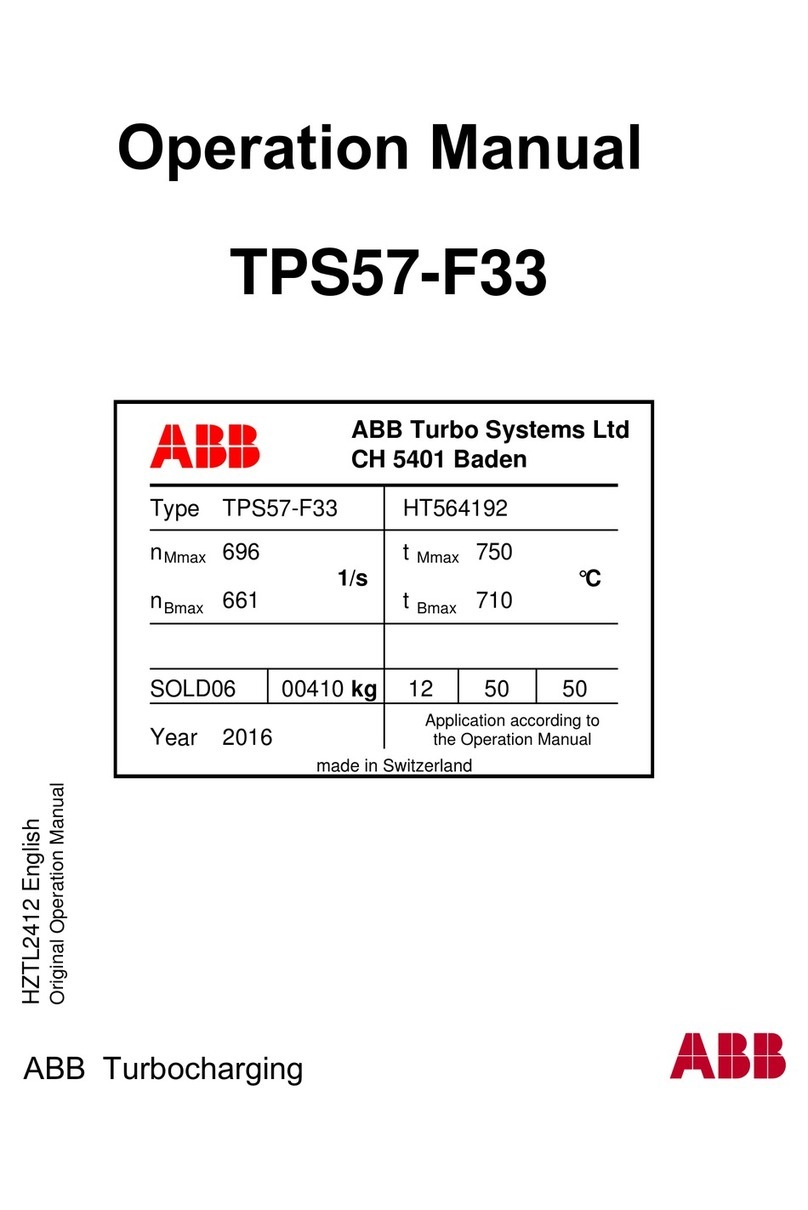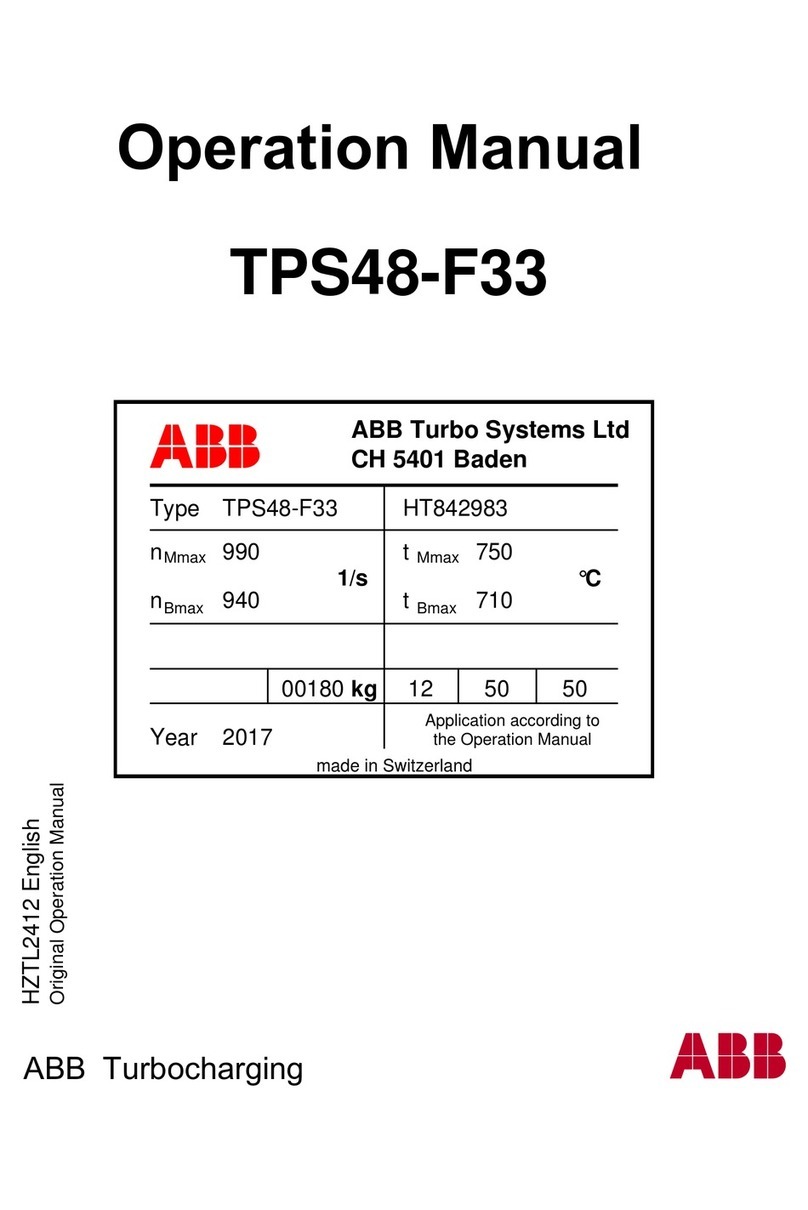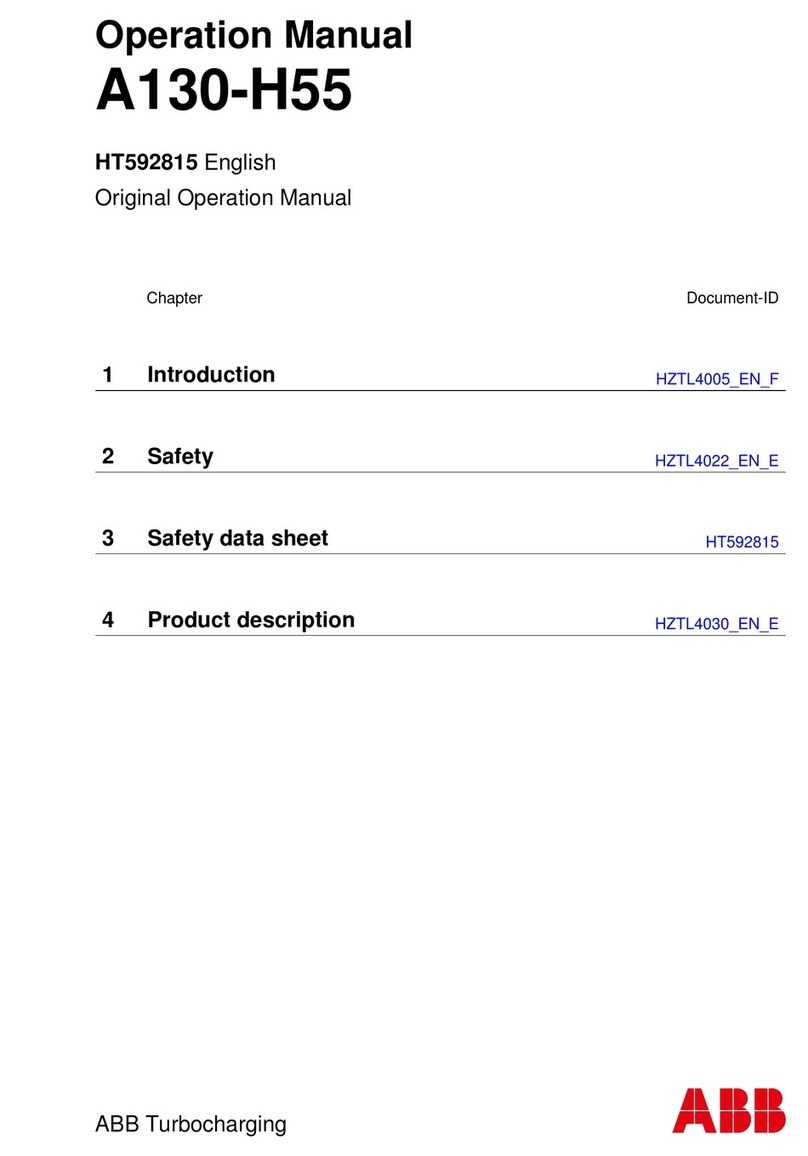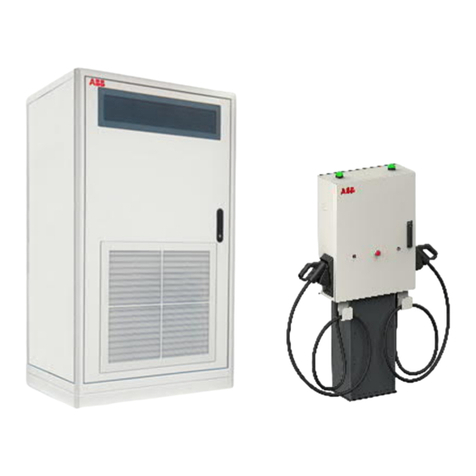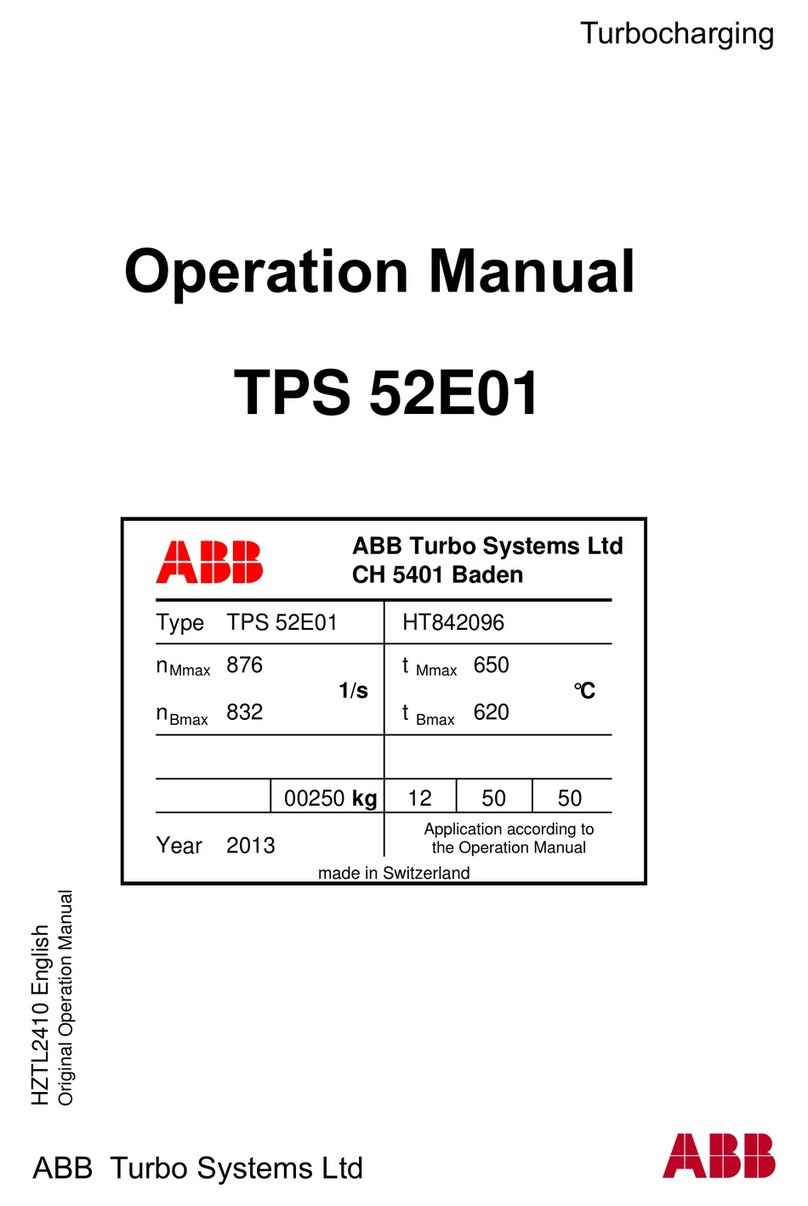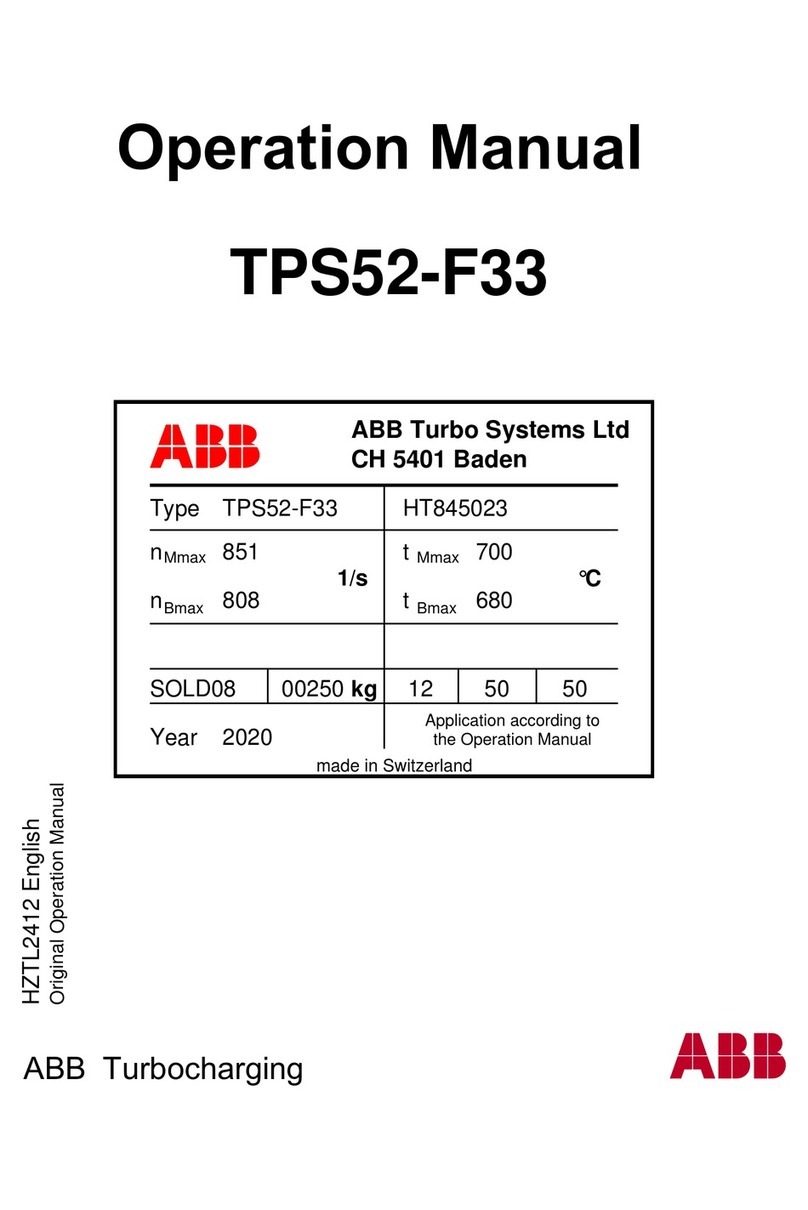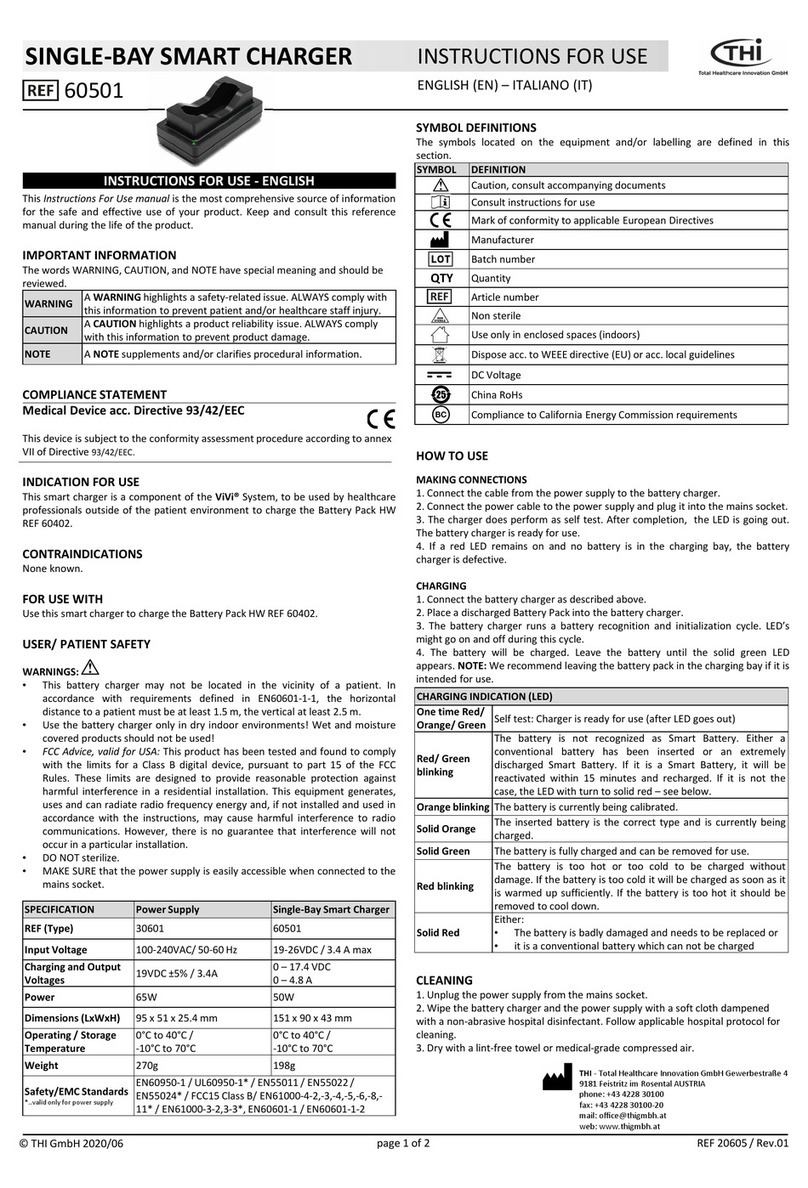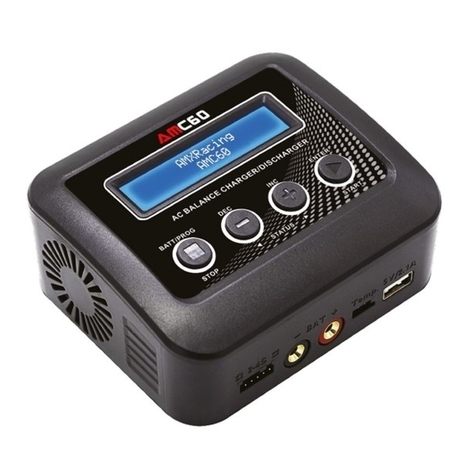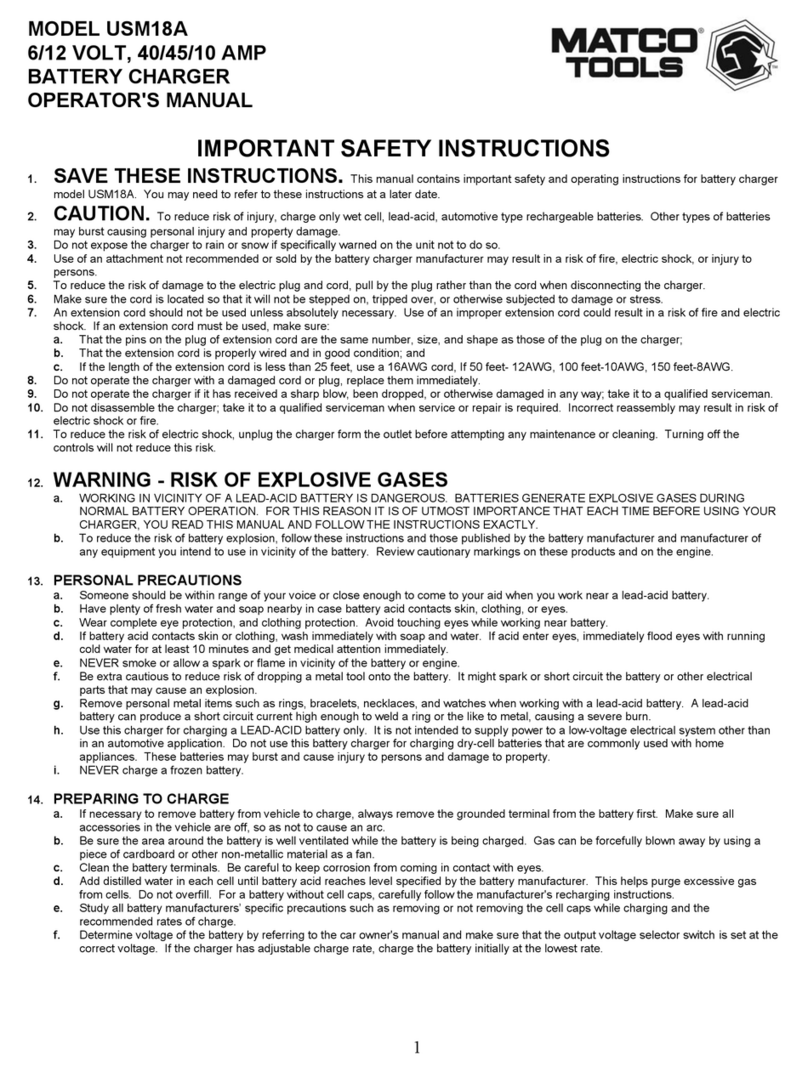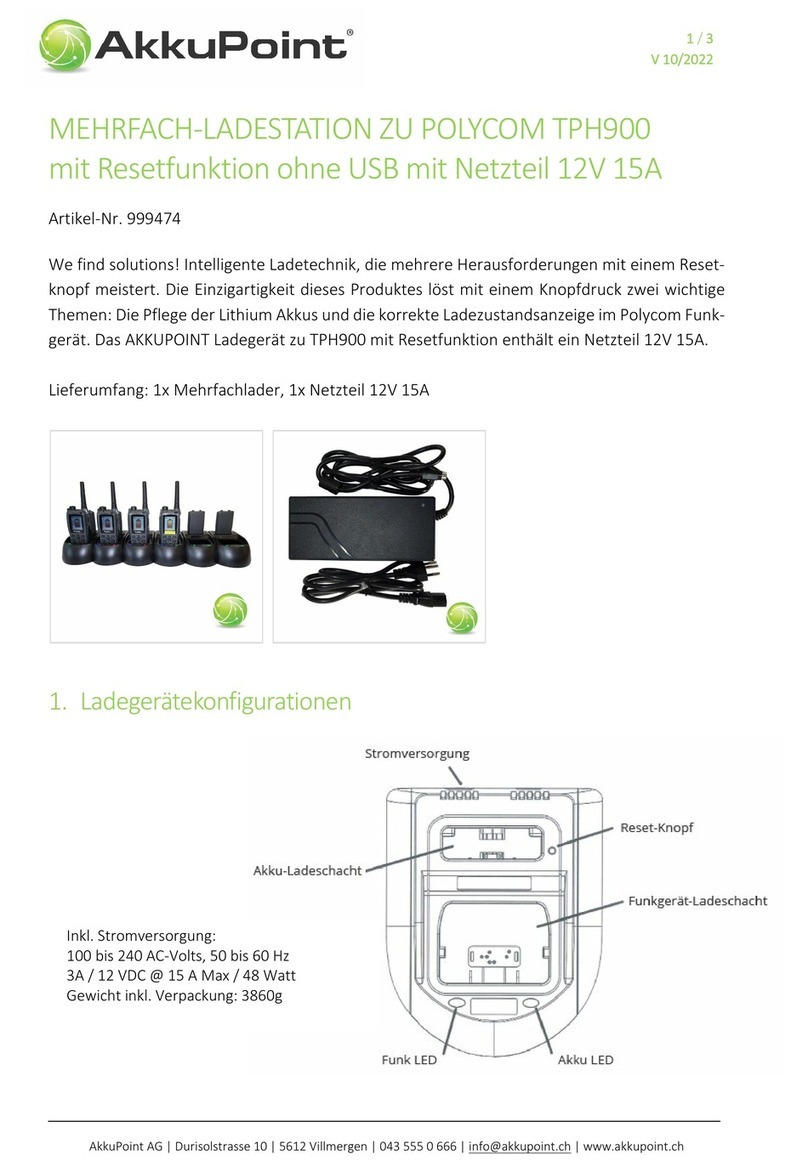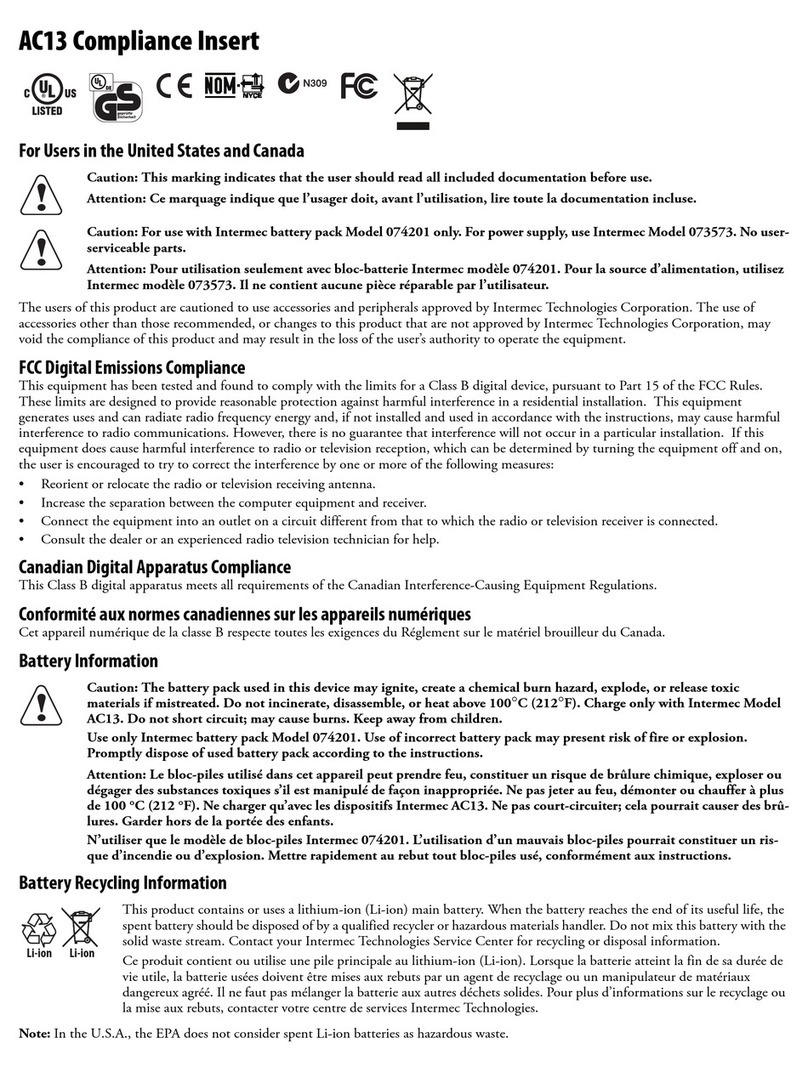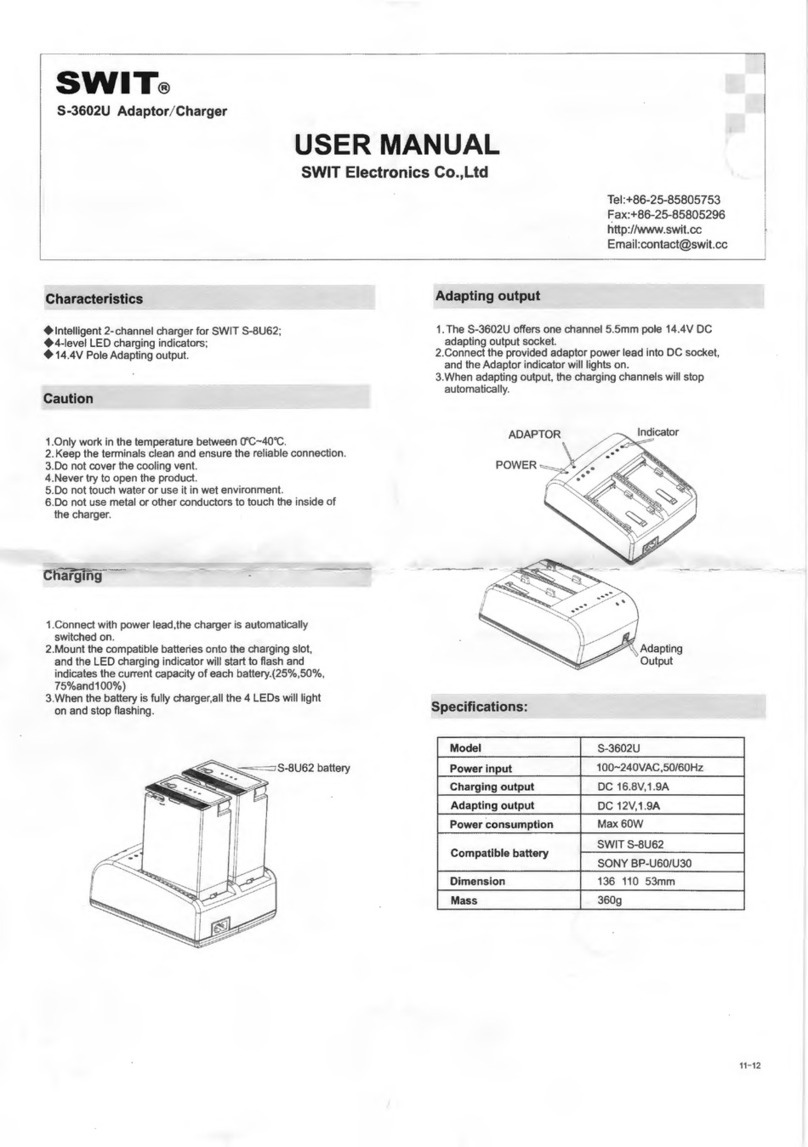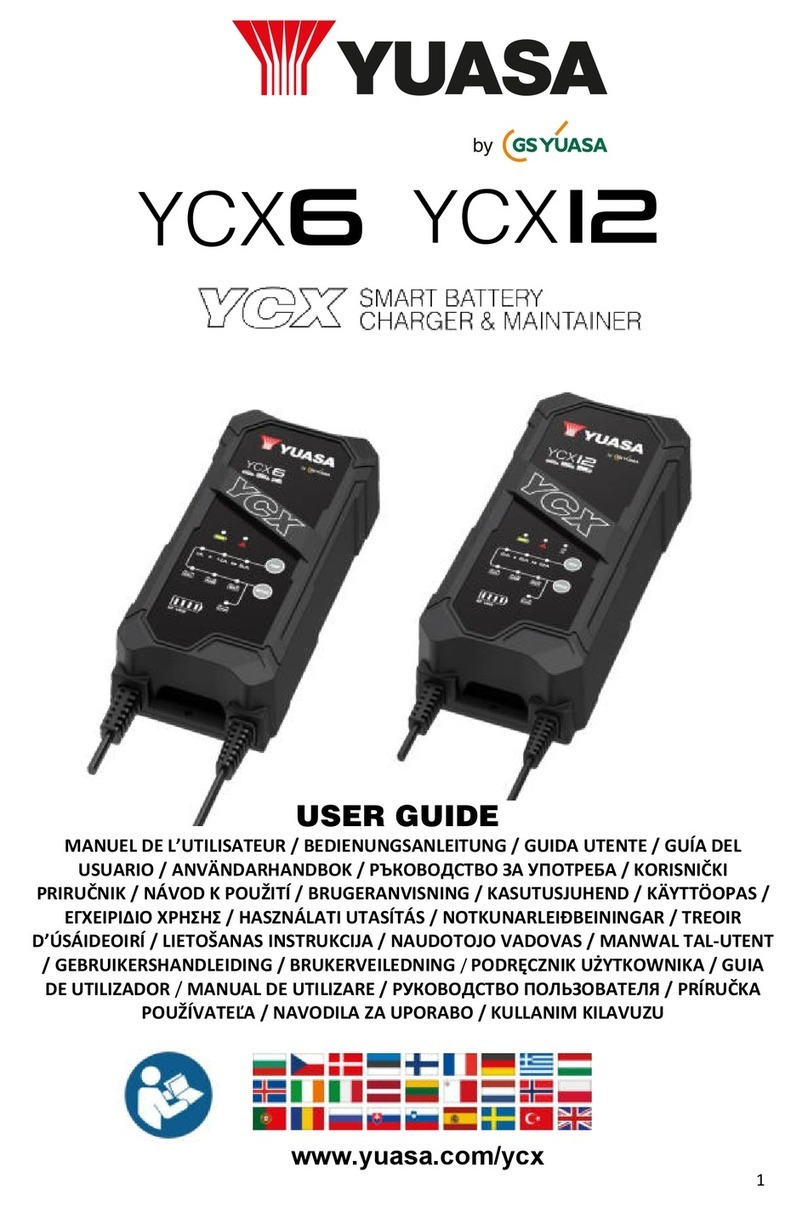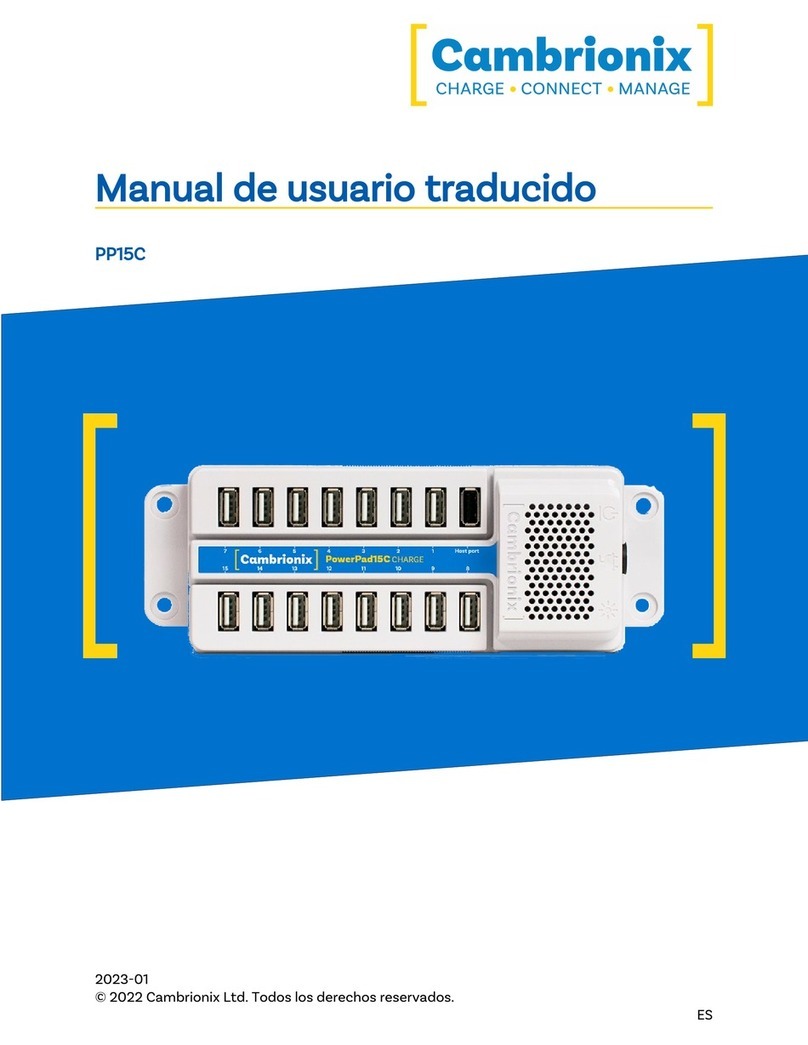ABB Terra 53 Manual

Rev 1.0Date. 20/08/2020
Terra 53/23 Charging Station
User and Operator Guide version
1.0

Notice
This document contains information about one or more ABB products and may include a
description of or a reference to one or more standards that may be generally relevant to the ABB
products. The presence of any such description of a standard or reference to a standard is not a
representation that all of the ABB products referenced in this document support all of the features
of the described or referenced standard. In order to determine the specific features supported by a
particular ABB product, the reader should consult the product specifications for the particular ABB
product.
ABB may have one or more patents or pending patent applications protecting the intellectual
property in the ABB products described in this document.
The information in this document is subject to change without notice and should not be construed
as a commitment by ABB. ABB assumes no responsibility for any errors that may appear in this
document.
In no event shall ABB be liable for direct, indirect, special, incidental or consequential damages of
any nature or kind arising from the use of this document, nor shall ABB be liable for incidental or
consequential damages arising from use of any software or hardware described in this document.

This document and parts thereof must not be reproduced or copied without written permission
from ABB, and the contents thereof must not be imparted to a third party nor used for any
unauthorized purpose.
Copyrights
All rights to copyrights, registered trademarks, and trademarks reside with their respective
owners.
Copyright © 2014 ABB.
All rights reserved.

4 | Terra 53/23 Charging Station User and Operator Guide version 1.0
Table of Contents
Glossary...................................................................................................................................................................... 6
1. Introduction..........................................................................................................................................................7
1.1 Preface........................................................................................................................................................7
1.2 Intended use of this document ................................................................................................................7
1.3 Intended use of the charger.....................................................................................................................7
1.4 Owner responsibilities ...........................................................................................................................7
1.5 Signs........................................................................................................................................................... 9
1.6 Safety regulations................................................................................................................................... 10
2. Description of the product...............................................................................................................................11
2.1 Overview of the system..........................................................................................................................11
2.2 Charger configurations ...........................................................................................................................12
2.3 Authorization to charge...........................................................................................................................12
2.4 MID certified Charger identification .................................................................................................13
2.5 Energy Meter Readout..........................................................................................................................13
3. Quick instruction charging...............................................................................................................................17
3.1 Emergency stop .................................................................................................................................... 20
4. Operator Instructions.......................................................................................................................................21
4.1 Cleaning of the cabinet...........................................................................................................................21
4.2 Service inspection of the cabinet ......................................................................................................21
4.2.1 Emergency stop inspection ........................................................................................................... 22
4.2.2 Special inspections .......................................................................................................................... 22
4.3 Problem resolving................................................................................................................................... 23
4.3.1 Overview of the cabinet.................................................................................................................. 23
4.3.2 Cabinet with open doors............................................................................................................... 25
4.3.3Component view open front door................................................................................................ 26
4.3.4 Component view right side door, DC side.................................................................................. 27
4.3.5 Component view open side door, AC side ............................................................................. 28
4.4 Technical functioning............................................................................................................................. 29
4.4.1 Normal operation ............................................................................................................................. 29
4.4.2 Power distribution....................................................................................................................... 29

4.5 Switch the charger on/off........................................................................................................................31
4.6 Climate control precautions ...................................................................................................................31
4.7 Preventive maintenance........................................................................................................................ 32
5. Compliance ...................................................................................................................................................... 32
6. Contact information......................................................................................................................................... 33

6 | Terra 53/23 Charging Station User and Operator Guide version 1.0
Glossary
AC
Alternating Current.
CCS
Combined Charging System. A universal AC
and DC charging system, also referred to as
“Combo”.
CHAdeMO
DC Quick charging method for electric
vehicles.
DC
Direct Current.
EV
Electric vehicle.
Owner
The legal owner of the charger.
OCPP
Open Charge Point Protocol. Open standard
for communication with charge stations.
PE
Protective Earth.
RCBO
Residual-current Circuit Breaker with
Overload protection. Breaks the connection if
a residual current or overload is detected.
RCD
Residual Current Device. Breaks the
connection if a residual current is detected.
RFID
Radio-Frequency IDentification. RFID is a
Communication technology by means of
radio waves to transfer data over a very short
distance between a reader and an electronic
tag or card.
Site operator
Person or company that has the charge
station under its control. The site operator
can be the owner, but not necessarily.
User
The driver of an EV that uses the charge
station.

1. Introduction
1.1 Preface
ABB’s Terra DC charging station of the 3rd generation is a multi-standard Electric Vehicle charging
station supporting a variety of charging standards and power ratings.
This manual describes the general operation and daily operator instructions of the entire product
family of chargers of the 3rd generation of ABB.
1.2 Intended use of this document
This document serves:
- As a reference to the EV drivers who will mainly use the pictograms and texts on the display
of the charger. The user interface design was thoroughly evaluated with user groups to
optimize understandability and to get the best user experience. Besides the screens
needed for the charging process, the interface has help screens available to provide
additional information.
- As a reference for site operators who are responsible for the chargers operation on site,
performing daily inspection and maintenance activities and who are able to perform simple
trouble shooting activities, after instruction of a certified ABB technician.
1.3 Intended use of the charger
The Terra charger is a stand-alone DC and AC fast charger for EV’s. The outlets of the charger must
not be used to charge any other equipment than electric vehicles compatible with the supported
charging standards.
1.4 Owner responsibilities
The owner and site operator are required:
- To operate the charge station with the protective devices installed and to make sure all
protective devices are correctly installed after carrying out installation or maintenance.
- To write an emergency plan that instructs people what to do in case of emergency.
- To prepare the site where the charge station will be installed, according to the
requirements described in this guide.
- To make sure that there is enough space around the charger to carry out maintenance
work.
- To appoint a person responsible for the safe operation of the charge station and for the
coordination of all work.
The owner is cautioned that changes or modifications not expressly approved by ABB could void
the owner’s authority to operate the equipment or ABB’s warranty.
Neither ABB nor its affiliates shall be liable to the purchaser of this product or third parties for
damages, losses, costs or expenses incurred by purchaser or third parties as a result of: an

8 | Terra 53/23 Charging Station User and Operator Guide version 1.0
accident, misuse or abuse of this product or unauthorized modifications, repairs or alterations to
this product, or failure to strictly comply ABB operating and maintenance instructions.

1.5 Signs
The following signs are used on the equipment and in this manual:
DANGER
Hazardous voltage
Identifies a hazard that could result in severe injury or death through
electrocution.
WARNING
Various
Identifies a hazard that could result in severe injury or death.
WARNING
Rotating parts
Identifies a hazard that could result in injury due to the presence of rotating
or moving parts
WARNING
Pinch Hazard
Identifies a hazard that could result in injuries in which some body parts are
pinched or crushed
CAUTION
Various
Identifies a hazard that could result in damage to the machine, other
equipment, and/or environmental pollution
NOTICE
Contains remarks, suggestions or advice.

10 | Terra 53/23 Charging Station User and Operator Guide version 1.0
1.6 Safety regulations
WARNING
If a charge outlet is damaged, take the following steps:
1. Do not use the damaged charge outlet.
2. Contact the owner / site operator.
WARNING
If there is an emergency
1. Push the emergency stop.
2. Contact the owner / site operator.
3. Act according to the emergency procedure of the owner / site
operator.
WARNING
Operation after damage or accidents
•If there is a fire in or nearby the charger;
•If the charger was immersed in water, or any other fluid;
•If the charger is damaged in any way.
1. Do not use the charger. Contact the owner / site operator.
NOTICE
When connecting or disconnecting a connector
1. Handle cables and connectors with care. Do not drop the cables or
connectors. Place them back in their respective holders.
2. Only insert a connector into a suitable car inlet. Never use
excessive force.
NOTICE
Connector locked
The DC/AC connectors will be locked during the charging process to
prevent it from dropping or being pulled out. Do not apply a force on the
cable during the charging process as it might damage the locking
mechanism in your car or damage the charger.

2. Description of the product
2.1 Overview of the system
The user operated components are indicated on Figure 1.
A. Touchscreen display
B. Emergency button
C. RFID reader
D. CCS charging connector and connector holder
The charger is equipped with at least one DC charging
cable and CCS connector. Your charger can be equipped
with multiple charging standard outlets (example below).
D
B
A
C
Figure 1 Charger view

12 | Terra 53/23 Charging Station User and Operator Guide version 1.0
2.2 Charger configurations
The charger is built up with a modular architecture
Supported charging standards in a charger configuration are described by a letter:
Indicator
Description
C
CCS up to 50kW DC output
J
CHAdeMO version 1.0 up to 50kW DC output
G
Type 2 AC power over a connected lead up to 41.4kW and 3 phases
T
Type 2 AC power over a socket up to 22kW and 3 phases
The maximum power each outlet can deliver depends on the charger type. This is indicated on the
type sticker with the indication T23 respectively T53.
Charger type
CCS/CHAdeMO
AC lead (G)
AC socket (T)
T23
20 kW
22 kW
22 kW
T53
50 kW
41.4 kW
22 kW
Power ratings are configurable and are restricted by the available grid fuse. Depending on the fuse
and the type of charger,7 the DC outlet (CCS/CHAdeMO) and AC outlet can or cannot be used at
the same time. Simultaneous DC charging is not possible.
Example: T53 CJG is a Terra charge station with 3 outlets (CCS, CHAdeMO and AC 43kW lead)
which, if connected on a 160A external fuse, can charge 50kW DC and 43kW AC simultaneously.
2.3 Authorization to charge
Operation of the charger is possible with or without authorization. The authorization to charge can
be based on RFID, PIN or mobile authentication methods. Operating a charger with authorization
requires a subscription to a backoffice. This can either be an ABB supplied standard solution, or an
external company offering authorization solutions via OCPP.

2.4 MID certified Charger identification
The nameplate contains all information relating to the Deutsche Messe EV regulation for the
measuring device calibration law. This is a field-installable upgrade.
To recognize if a charger is compliance to MID Directive, Check the charger label. The product
compliance is indicated by the info showed in the Highlighted box
The Label reports all the necessary info to be compliance to 2014/32/EU MID directive.
2.5 Energy Meter Readout
A. Hour [hh:mm:ss]
B. Data [YY-MM-DD]
C. DC Energy delivered [kWh]
D. AC Energy delivered [KWh] (where available)
B
A
C
D

14 | Terra 53/23 Charging Station User and Operator Guide version 1.0
User requirements obligations of the charge point operator and service provider
Notes on measurement accuracy according to the type examination certificate
Requirements for the operator of the charging device, which he must meet as a prerequisite for
proper operation of the charging device.
The operator of the charging facility is the user of the measuring device within the meaning of
Section 31 of the Measurement and Calibration Act
1. The charging device is only considered to be used as intended and in compliance with
calibration law if the meters built into it are not exposed to environmental conditions other
than those for which their type examination certificate was issued.
2. When registering the charging points with the Federal Network Agency, the user of this
product must also register the PK specified on the charging device for the charging points
in its registration form! Without this registration, it is not possible to operate the charging
device in compliance with calibration law.
Weblink:
https://www.bundesnetzagentur.de/DE/Sachgebiete/ElektrizitaetundGas/Unternehmen_
Institutionen/HandelundVertrieb/Ladesaeulen/Anzeige_Ladepunkte_node.html
3. The user of this product must ensure that the calibration validity periods for the
components in the charging device and for the charging device itself are not exceeded.
4. The user must store the signed data packets read from the loading device - in accordance
with the pagination, permanently (also) on hardware dedicated to this purpose in his
possession ("dedicated memory"), - keep them available for authorized third parties
(operational obligation of the memory.) . Permanent means that the data not only have to
be stored until the business transaction is completed, but at least until the expiry of the
legal deadlines for legal redress for the business transaction. No substitute values may be
created for non-existent data for billing purposes.
5. The user of this product must provide users of measured values who receive measured
values from this product from him and use them in business transactions with an electronic
form of operating instructions approved by the conformity assessment body. The user of
this product must in particular point out No. II "Requirements for the user of the measured
values from the charging device"
6. The user of this product is obliged to notify according to § 32 MessEG (excerpt):
Section 32 Obligation to notify (1) Anyone who uses new or renewed measuring devices
must notify the competent authority under state law no later than six weeks after
commissioning.
7. Insofar as it is considered necessary by the authorized authorities, the measuring device
user must provide the complete content of the dedicated local memory or of the memory
at the CPO with all data packets of the accounting period.
Requirements for the user of the measured values from the charging device (EMSP)
The user of the measured values must observe Section 33 of the MessEG
MessEG (quote)

§ 33 (Requirements for using measured values)
1. Values for measured variables may only be specified or used in business or official traffic or
for measurements in the public interest if a measuring device was used as intended for
their determination and the values can be traced back to the respective measurement
result, as far as in the ordinance according to § 41 number 2 nothing else is determined.
Other federal regulations that serve comparable protection purposes continue to apply.
2. Anyone who uses measured values must ensure, within the scope of their possibilities, that
the measuring device fulfills the legal requirements and has to be confirmed by the person
using the measuring device that they are fulfilling their obligations.
Anyone who uses measured values has
1. to ensure that invoices, insofar as they are based on measured values, can be easily
understood by the person for whom the invoices are intended for checking the measured
values given and)
2. If necessary, provide suitable aids for the purposes mentioned in number 1.
For the user of the measured values, this regulation gives rise to the following specific obligations
for the use of measured values in accordance with calibration law:)
3. The contract between EMSP and the customer must clearly stipulate that only the delivery
of electrical energy and not the duration of the charging service is the subject of the
contract.
4. The time stamps on the measured values come from a clock in the charging device that is
not certified in accordance with measurement and calibration law. They must therefore not
be used to rate the measured values
5. EMSP must ensure that the e-mobility service is sold by means of charging devices that
enable the ongoing charging process to be monitored if there is no corresponding local
display on the charging device. At least at the beginning and end of a charging session, the
measured values must be available to the customer in a trustworthy manner under
calibration law.
6. The EMSP must provide the customer with the billing-relevant data packages including
signature as a data file at the time of invoicing in such a way that they can be checked for
authenticity using the transparency and display software. They can be made available via
channels that have not been verified under calibration law.
7. The EMSP must make available to the customer the transparency and display software
belonging to the charging device for checking the data packets for integrity.
8. The EMSP must be able to show in a verifiable manner which means of identification was
used to initiate the charging process associated with a specific measured value. This
means that he must be able to prove for every business transaction and measured value
billed that he has correctly assigned the personal identification data. The EMSP has to
inform its customers about this obligation in an appropriate form.
9. The EMSP may only use values for billing purposes that are available in any dedicated
memory in the charging device and / or the memory of the operator of the charging device.
Substitute values may not be created for billing purposes.

16 | Terra 53/23 Charging Station User and Operator Guide version 1.0
10. The EMSP must make appropriate agreements with the operator of the charging facility to
ensure that the data packets used for billing purposes are stored for a sufficient length of
time in order to be able to complete the associated business transactions.
11. In the event of a justified request for verification, the EMSP has to enable the
authentication of the copies of the product belonging to these operating instructions by
providing suitable identification means for the purpose of carrying out calibrations,
diagnostic tests and usage monitoring measures.
12. All of the above obligations apply to the EMSP as the user of measured values in the sense
of Section 33 MessEG even if it obtains the measured values from the charging facilities via
a roaming service provider.
13.

3. Quick instruction charging
To charge an electric vehicle:
1. Park the electric vehicle with the charge socket within reach of the connector.
2. Turn off the electric vehicle.
3. Select the charging protocol on the display and follow the instructions on the screen.
4. Connect the charge connector to the vehicles charge socket
5. On the touchscreen, press start.
6. If applicable, scan the RFID card for authorization, use PIN or use a mobile payment
method.
7. The charger charges the vehicle after the preparation phase and will indicate the progress
on the screen.

18 | Terra 53/23 Charging Station User and Operator Guide version 1.0
NOTICE
Limited information during AC charging
When AC charging, there is limited information available on the display.
Only charged kWh and elapsed time are shown.
Due to the nature of the AC charging protocol it is not possible to show
more information.
Stop charging:
8. Select stop on the touchscreen.
9. Authorize using the same authentication method as was used to start.
•Charging stops and the connector is unlocked by the car for Combo and AC
charging or by the charger for CHAdeMO charging
10. Take the connector out of the car and put it back in the connector holder on the charger.
NOTICE
Locked connector
For AC and CCS charging the EV locks the connector. If the user wants to
take the connector out of the car, it may be necessary to unlock all doors
of the EV, or use the “unlock charge connector button” on the car key if
present.
NOTICE
Session end
Charging will stop without user interaction:
•When the EV indicates to the charger charging is completed.
•When the maximum charge time set by the operator/owner
has been reached.
If the battery is not full a new charge session can be started. In general,
topping up the battery is slow-charging.

NOTICE
Stop by emergency button
The charger stops the charge session when the emergency stop is pushed.
Only push the emergency stop if there is an emergency!

20 | Terra 53/23 Charging Station User and Operator Guide version 1.0
3.1 Emergency stop
If there is an emergency:
1. Push the emergency stop button (B in Figure 1).
The Charger stops the operation and displays a message.
2. Contact the Site operator.
NOTICE
emergency button is pressed accidentally
If the emergency stop button is accidentally pushed:
1. Verify the situation is safe.
2. Turn the emergency button clockwise.
•The emergency button is released and the charger is
reactivated.
•After a few seconds the message disappears from the
screen and the charger returns to normal operation.
This manual suits for next models
1
Table of contents
Other ABB Batteries Charger manuals
